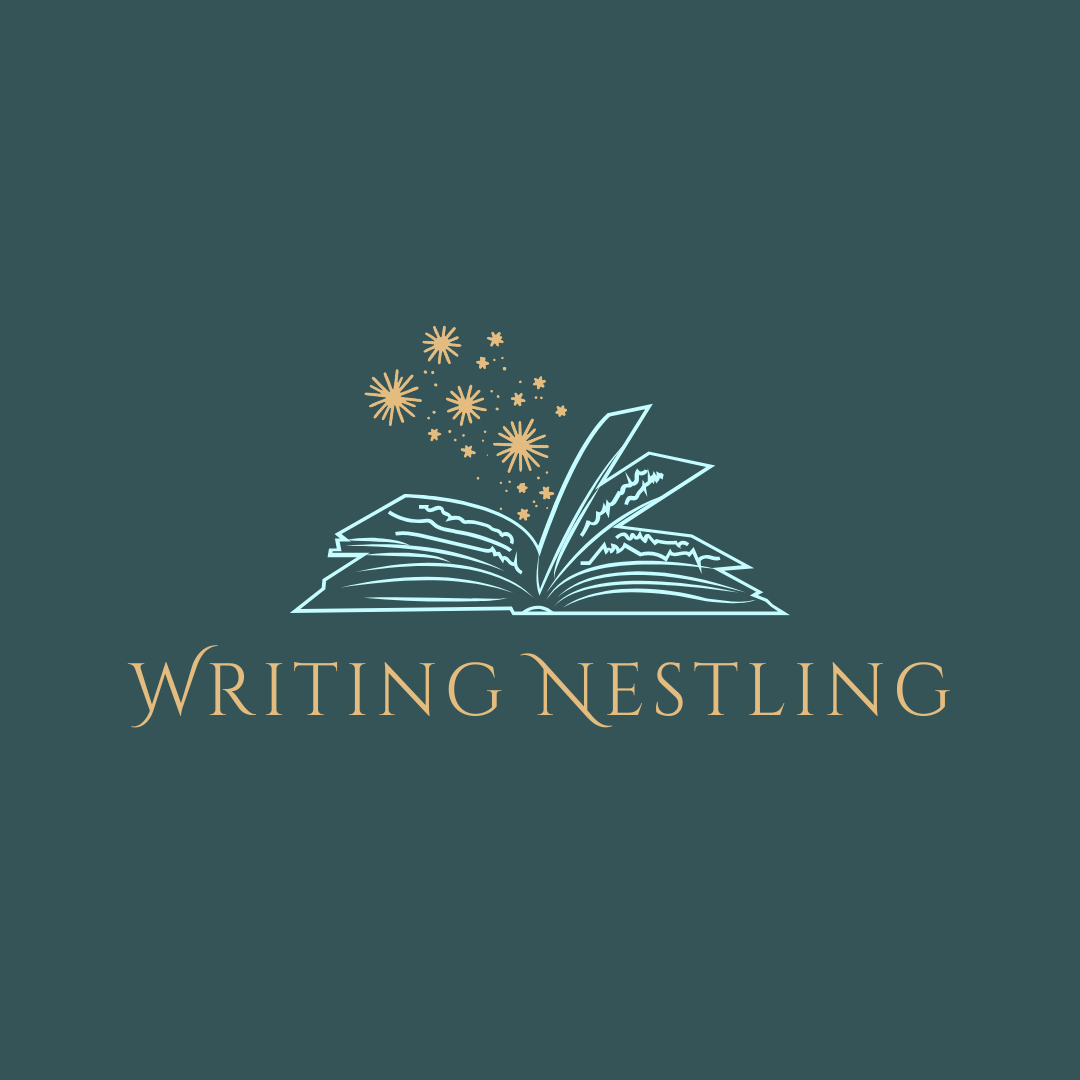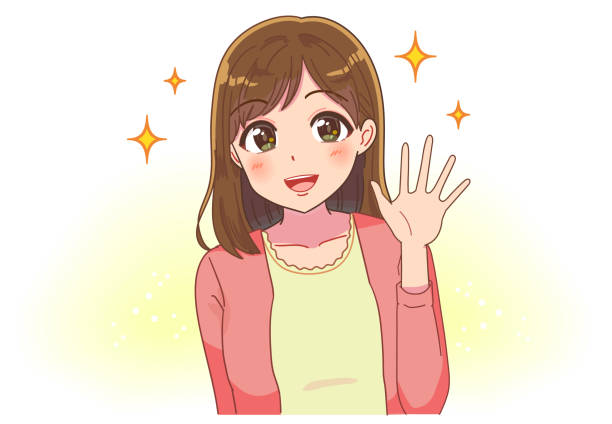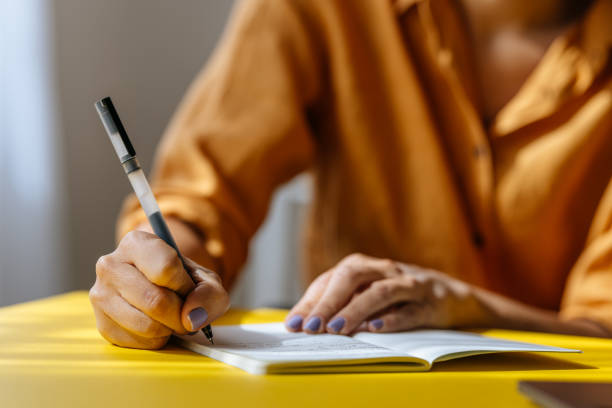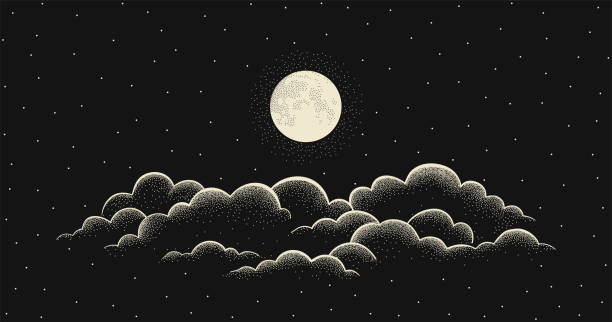How To Describe Laughing In Writing (11 Best Tips)
How To Describe Laughing In Writing
How To Describe Laughing In Writing: In the realm of storytelling, laughter is a universal language that transcends cultural boundaries and connects readers to the rich tapestry of human emotion.
Describing laughter in writing is an art form, a delicate brushstroke on the canvas of narrative that can evoke everything from sheer joy to profound sorrow.
It is the key to crafting authentic and relatable characters, to setting the mood of a scene, and to ensnaring readers in the magic of the written word.
This journey into the nuances of laughter will explore the myriad facets of this expressive emotion, from the spontaneous gales of genuine mirth to the sinister cackles that haunt our nightmares.
In the following exploration, we will delve into the tools, techniques, and subtleties that transform laughter from mere text on a page into a vivid, memorable experience, one that resonates deeply with the hearts and minds of those who embark on the literary adventure.
How To Describe Laughing In Writing
Describing laughing in writing involves using vivid language and sensory details to convey the sound, appearance, and emotional context of the laughter. Here’s a step-by-step process on How To Describe Laughing In Writing:
Observe the Laugh
Pay close attention to the person or group of people who are laughing. Notice their facial expressions, body language, and the sound of their laughter.
Choose the Right Words
Select descriptive words that capture the essence of the laughter. Consider using adjectives, adverbs, and verbs that evoke the feeling and intensity of the laughter.
Show Emotion
Describe the emotional context of the laughter. Is it joyful, hearty, or nervous? Use words that convey the underlying emotion, which can help the reader connect with the characters or situation.
Use Onomatopoeia
Incorporate onomatopoeic words to mimic the sound of laughter. Examples include “ha-ha,” “guffaw,” “chuckle,” “snicker,” and “snort.” These words can add a realistic touch to your description.
Include Facial Expressions
Describe the person’s facial expressions while laughing. Mention if their eyes crinkle, cheeks flush, or if they throw their head back. Facial cues can reveal the authenticity and intensity of the laughter.
Body Language
Incorporate body language to enhance your description. Mention if the person doubles over, clutches their stomach, or slaps their knee while laughing. These actions can help convey the physicality of the laughter.
Contextualize the Laughter
Explain why the laughter is happening. Is it in response to a funny joke, a heartwarming moment, or a tense situation? The context provides insight into the characters’ emotions and motivations.
Dialogue and Inner Thoughts
If your writing includes dialogue or inner thoughts, use these to further illustrate the laughter. Characters can comment on or react to the laughter, providing additional layers to the description.
Vary Sentence Structure
To keep your description engaging, vary your sentence structure. Use short, punchy sentences for quick bursts of laughter and longer, descriptive sentences for more extended laughter scenes.
Edit for Clarity
After writing your description, read it aloud or have someone else read it to ensure it effectively conveys the laughter you intended. Make sure the description is clear and evocative.
Avoid Clichés
Try to avoid clichés like “laughter filled the room” or “they laughed until they cried.” Instead, strive for unique and vivid descriptions that capture the essence of the laughter
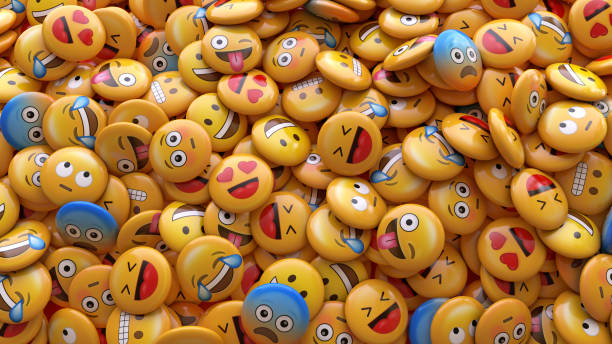
Types of Laughter
Laughter, the universal language of joy and connection, comes in a kaleidoscope of flavors, each as unique as a fingerprint. From the spontaneous eruptions of genuine laughter that ripple through our souls like a refreshing breeze on a scorching day, to the forced chuckles that feel as unnatural as a plastic flower in a field of roses.
Picture the maniacal hysteria that dances on the edge of sanity, like a carnival ride teetering on the brink of chaos, or the nervous titters that flutter in the air like delicate butterflies, revealing secrets even their fluttering wings cannot contain.
Then, there’s the sinister laughter, cold and calculated, slicing through the silence like a razor-sharp blade in the dark. In the world of words, these types of laughter are the colorful brushstrokes on the canvas of human emotion, painting stories that are as diverse and vibrant as the laughter itself.
Spontaneous Laughter
Spontaneous laughter is the symphony of the soul, an eruption of unbridled joy that bursts forth like fireworks on a summer night.
It’s the kind of laughter that catches you off guard, sweeping you into a whirlwind of mirth and camaraderie, leaving no room for inhibition or pretense.
It bubbles up from deep within, a visceral response to life’s unexpected moments of hilarity. Spontaneous laughter is contagious, an infectious melody that transcends language and cultural barriers, inviting others to join in the harmonious chorus of shared amusement.
It’s the heartwarming reminder that, no matter the challenges we face, the gift of laughter remains our constant companion, lighting up our lives with its spontaneous brilliance.
Hysterical Laughter
Hysterical laughter is a tempestuous storm of emotions, an unbridled release of tension that borders on the surreal.
It’s the kind of laughter that bubbles forth in moments of sheer absurdity or overwhelming stress, when the line between humor and hysteria blurs.
This laughter can be as unpredictable as a thunderclap in a clear sky, starting with a titter and escalating into a cacophonous explosion that leaves your sides aching and tears streaming down your face.
It’s a wild ride, a rollercoaster of emotions that, for a brief moment, sweeps away the weight of the world.
Yet, underneath the surface, it hints at something deeper, a complex interplay of joy and turmoil, a coping mechanism that reveals the intricate tapestry of the human psyche.
Hysterical laughter is a paradox, a testament to our resilience, and a reminder that even in the darkest of times, laughter can be a beacon of light, guiding us back to sanity.
Nervous Laughter
Nervous laughter is the fragile mask we wear when our emotions teeter on the edge of uncertainty. It’s a delicate dance between anxiety and amusement, a reflexive response to situations that leave us feeling vulnerable or uncomfortable.
This laughter often arrives uninvited, like an uninvited guest to a solemn occasion, disrupting the expected decorum with its anxious giggle.
It betrays our inner turmoil, revealing our unease even as we try to project an air of nonchalance. Nervous laughter can be like a safety valve, releasing pent-up tension and allowing us to navigate through awkward or anxiety-inducing moments.
It’s a testament to our human complexity, a reminder that sometimes, we laugh not because something is funny, but because it’s the only defense we have against the unpredictable and disconcerting nature of life.
Mocking Laughter
Mocking laughter is a venomous echo of mirth, a twisted expression of superiority and scorn that drips with derision. It’s the laughter that mocks and belittles, a cruel reminder of our capacity to hurt with words.
This laughter, often accompanied by a mocking tone and a sneer, is a weapon wielded by those seeking to diminish others, to cast shadows on their vulnerabilities and insecurities.
It can cut deeper than any blade, leaving emotional wounds that may take far longer to heal. Mocking laughter is a chilling testament to the darker facets of human interaction, a reminder that humor can be used not just to connect but also to divide, to wound rather than to heal.
In the realm of storytelling, it serves as a powerful tool for character development, unearthing the depths of cruelty and insecurity that reside within us all.
Sinister Laughter
Sinister laughter is the unsettling, bone-chilling cadence that reverberates in the shadows of our deepest fears. It’s the laughter that emanates from malevolent intent, from those whose motives are cloaked in darkness and malice.
This laughter is a discordant symphony that sends shivers down the spine, an auditory harbinger of impending doom. It echoes through the corridors of our nightmares, where villains and monsters revel in their wickedness.
Sinister laughter can be a potent storytelling device, a harbinger of danger or a glimpse into the psyche of a malevolent character.
It serves as a chilling reminder that laughter, that most joyful of human expressions, can be twisted into something sinister and macabre, capable of sending chills through the bravest of souls.

Tools for Describing Laughing
Describing laughter is like wielding a finely crafted artisanal tool chest, each instrument delicately designed to sculpt the most vivid and memorable imagery.
The sound of laughter becomes a symphony, with crescendos and staccatos that paint aural landscapes. Facial expressions become the brush strokes, carving smiles and crinkling eyes into the canvas of emotion.
Body language is the sculptor’s hand, molding the laughter into tangible form, from a genteel chuckle to a full-throated guffaw.
Dialogue and verbal cues are the secret codes, revealing the intricate dance of humor and camaraderie. Metaphors and similes are the poetic whispers, adding layers of depth and resonance.
And cultural and contextual considerations are the compasses, guiding us through the intricate terrain of laughter’s nuanced meanings.
Armed with this toolkit, a writer becomes an architect of emotion, constructing worlds where laughter dances off the page, inviting readers to join in the joyous revelry.
Imagery and Sensory Details
Imagery and sensory details are the lifeblood of vivid storytelling, infusing narratives with color, texture, and resonance. They are the tools that allow readers to step into the shoes of characters and experience the world through their senses.
Through the magic of well-crafted imagery, words transform into a canvas where readers can see the sparkle of a dew-kissed morning, taste the sweetness of a ripe summer peach, hear the distant echoes of a bustling city, smell the earthy petrichor after a rainstorm, and feel the cool silkiness of moonlight on their skin.
Sensory details not only make stories come alive but also forge emotional connections between readers and characters, invoking empathy and immersion. They are the storyteller’s alchemy, turning words into sensory experiences that linger in the reader’s mind long after the last page is turned.
Dialogue and Verbal Cues
Dialogue and verbal cues are the heartbeat of character interaction, pulsating with the rhythms of emotion, tension, and revelation.
They are the tools through which characters express their thoughts, feelings, and intentions, allowing readers to eavesdrop on their inner worlds.
Dialogue can be a delicate dance, revealing subtext through the spaces between words, or a thunderous clash of conflict, where the unsaid carries as much weight as the spoken.
Verbal cues, those subtle shifts in tone, cadence, and choice of words, can unveil hidden motives or betray the facades characters present to the world.
Effective dialogue and verbal cues are the keys to character development and storytelling, breathing life into fictional beings and propelling plots forward.
They are the essence of storytelling’s human dimension, where the power of words extends far beyond their literal meanings, creating a symphony of voices that resonate with readers’ own experiences and emotions.
Metaphors and Similes
Metaphors and similes are the jewels in the writer’s treasure chest, sparkling with the power to illuminate the ordinary and transform the mundane into the extraordinary.
Metaphors are the alchemical brews that transmute abstract concepts into tangible, relatable images, turning time into a river or love into a battlefield. Similes are the delicate threads that weave connections between the known and the unfamiliar, likening a smile to sunshine or a heartache to a stormy sea.
Together, they breathe life into description, imbuing it with depth and resonance. Like a painter’s brushstrokes on a canvas, metaphors and similes add layers of meaning and emotion to a narrative, inviting readers to see, feel, and experience the world in fresh and unexpected ways.
They are the poetic whispers that linger in the reader’s mind, painting the landscape of imagination with vivid colors and textures.
Describing the Impact
Describing the impact is like tracing the ripples of a pebble dropped into the serene waters of storytelling. It’s the moment when words cease to be mere ink on a page and instead become the resonating echoes that reverberate in the reader’s soul.
Impact transcends the narrative, seeping into the marrow of our being, leaving an indelible mark. It’s the way laughter shared between characters can thaw the reader’s heart, forging a connection as real as any lived experience.
It’s the hushed revelation that the words we read have the power to shape our thoughts, inspire our dreams, and challenge our beliefs.
Impact is the heartbeat of storytelling, the compass guiding readers through the labyrinth of human emotion, leaving them forever changed by the journey.
Effect on Other Characters
The effect of laughter on other characters is a delicate dance of emotional contagion. Like a wildfire, laughter can spread from one character to another, igniting a chain reaction of joy, camaraderie, or even suspicion.
It’s a reflection of the interconnected web of human relationships, where one person’s laughter can be the catalyst for healing wounds, thawing icy hearts, or exposing hidden agendas.
Laughter can serve as a bridge, forging bonds between characters, or as a wedge, driving them further apart. Its effect on other characters is a revealing mirror, reflecting their own vulnerabilities, insecurities, and desires.
In the intricate tapestry of storytelling, the ripple effect of laughter weaves threads of connection and conflict, shaping the narrative landscape and deepening the reader’s engagement with the characters’ inner worlds.

Influence on the Atmosphere and Mood
Laughter possesses a remarkable ability to mold the atmosphere and mood of a scene, much like a skilled conductor orchestrating a symphony.
It can infuse a space with an aura of lightheartedness and warmth, like sunshine breaking through clouds on a gloomy day. In contrast, it can also shroud the surroundings in an unsettling tension, turning laughter into a discordant note in an otherwise somber symphony.
The mood-altering power of laughter can breathe life into a room, making it hum with energy and effervescence, or it can plunge it into a somber silence, highlighting the weight of unspoken emotions.
It is a masterful tool in the writer’s arsenal, capable of manipulating the emotional climate of a story, guiding readers through a rollercoaster of feelings, and ensuring that every narrative beat resonates with the intended impact.
Revealing Character Traits
The way characters engage with laughter is a revelatory window into their essence, an uncloaked mirror reflecting their innermost traits and idiosyncrasies.
Some wear laughter like armor, using humor as a shield to deflect pain or vulnerability, while others employ it as a weapon, revealing their penchant for cruelty or manipulation.
For some, laughter is a spontaneous, unguarded expression of their true selves, their joy and authenticity laid bare for all to see. Conversely, a character’s inability to laugh or their propensity for forced, hollow chuckles can hint at underlying insecurities or emotional turmoil.
The nuances in how characters navigate the world of laughter expose their intricacies, forging a connection between readers and these fictional beings that goes beyond mere words on a page.
In the intricate dance of storytelling, laughter becomes a choreography of character traits, each giggle and guffaw revealing a layer of personality, making the characters come alive in the reader’s imagination.
Common Mistakes to Avoid
Navigating the labyrinth of storytelling is a thrilling journey, but even the most intrepid writers can stumble into the treacherous pitfalls of common mistakes.
These literary landmines include the perilous territory of overusing tired clichés, where creativity withers and prose becomes as stale as day-old bread.
Another abyss lies in the failure to tailor the laughter to character and situation, a blunder that can turn even the most genuine chuckle into an artificial, hollow echo.
But perhaps the most insidious pitfall is neglecting the unspoken, the subtle dance of nonverbal communication, where characters’ emotions are lost in translation, leaving readers adrift in a sea of confusion.
These common mistakes, like lurking shadows on the writer’s path, serve as cautionary tales and stepping stones to mastery, urging wordsmiths to tread carefully and emerge as seasoned storytellers.
Overusing Generic Phrases
Overusing generic phrases is akin to playing a monotonous tune on a beautiful instrument; it dulls the brilliance and stifles the potential for literary virtuosity.
Writers must beware the siren song of clichés, those well-worn expressions that have lost their sparkle through relentless repetition.
These trite phrases, like faded stars in a night sky, offer little illumination and serve as lazy crutches that undermine the creative power of words. Instead of painting vivid, unique images, writers who rely on generic phrases find themselves recycling tired metaphors and stale adages, leaving their prose as dull as dishwater.
The true art of storytelling lies in originality, in forging new connections between words and emotions, and in crafting narratives that resonate deeply with readers.
So, let the overused phrases rest in peace and allow the limitless palette of language to paint your stories with brilliance and freshness.
Failing to Match Laughter to Character and Situation
Failing to match laughter to character and situation is like dressing in a flamboyant costume at a formal dinner—it’s glaringly out of place and disrupts the harmony of the scene.
Laughter should be as individual as the characters who express it, a reflection of their unique personalities and circumstances. A character’s laughter can be a poignant melody or a raucous symphony, but it should harmonize with their emotional composition and the context in which it arises.
A misalignment between laughter and character can shatter the reader’s immersion, leaving them feeling disconnected from the narrative.
Whether it’s a dry chuckle from a stoic detective in the midst of a murder investigation or the jubilant laughter of children on a carefree summer day, the art of storytelling demands that laughter be an authentic note in the character’s personal symphony, creating a rich tapestry of emotions that resonates with the reader’s own experiences.
Advanced Techniques
Advanced techniques in storytelling are like the secret passages hidden within the grand mansion of words, accessible only to those who dare to explore beyond the well-trodden corridors.
These literary acrobatics involve the delicate ballet of subtext in laughter, where what remains unsaid speaks volumes, weaving intricate layers of meaning beneath the surface.
It’s the skillful use of laughter as foreshadowing, a tantalizing breadcrumb trail hinting at the narrative’s hidden treasures and unforeseen twists.
But perhaps most enchanting is the art of layering emotions in laughter, where a single guffaw can contain within it a complex fusion of joy, sorrow, and longing, like a carefully blended cocktail of feelings.
These advanced techniques are the hallmarks of masterful storytellers, who wield words like magic wands, conjuring worlds and emotions that defy gravity and leave readers spellbound, yearning for more.
Subtext in Laughter
Subtext in laughter is the art of writing between the lines, where the surface merriment conceals a hidden world of deeper emotions and unspoken truths.
It’s the laughter that masks pain, the giggles that disguise longing, or the chuckles that veil resentment. Subtext in laughter allows characters to communicate on multiple levels, inviting readers to decipher the layers beneath the surface.
It’s the pregnant pause before a laugh, the hesitation in the midst of hilarity, or the glint of sadness behind a smile.
In storytelling, subtext in laughter becomes a powerful tool for character development and plot advancement, as it unveils the intricacies of human nature and the complexities of relationships.
It’s a secret code that adds depth and resonance to the narrative, leaving readers intrigued and engaged, as they unearth the concealed emotions concealed within the laughter’s enigmatic embrace.
Using Laughter as Foreshadowing
Using laughter as foreshadowing is like scattering breadcrumbs along the narrative path, offering readers tantalizing hints of what lies ahead.
It’s the skillful placement of laughter, seemingly innocuous in the moment, but pregnant with deeper meaning and ominous portents. A light-hearted chuckle may foreshadow impending danger, while a nervous giggle might presage an unraveling of secrets.
The beauty of this technique lies in its subtlety; it plants seeds of curiosity in the reader’s mind, prompting them to read on with bated breath, eager to uncover the mysteries concealed within the laughter’s echo.
Like a master illusionist, the writer uses laughter to divert attention while silently signaling the impending magic trick, weaving a tapestry of anticipation that keeps readers entranced until the final revelation.

Layering Emotions in Laughter
Layering emotions in laughter is akin to crafting a complex and exquisite symphony of feelings, where the simple act of laughter becomes a multi-dimensional experience.
It involves infusing a laugh with an intricate blend of contradictory emotions, like the bittersweet fusion of joy and sorrow, or the tender interplay of love and melancholy.
This technique allows characters to express a rich tapestry of sentiments, revealing the depth and complexity of their human nature. It’s the laughter that dances on the precipice of tears, encapsulating the beauty and fragility of the human experience.
In the hands of a skilled writer, layering emotions in laughter becomes a profound storytelling tool, resonating deeply with readers who recognize the profound truth that laughter, at its core, is a reflection of the intricate and often paradoxical emotions that define our lives.
Editing and Polishing
Editing and polishing are the masterful strokes that transform the raw stone of a manuscript into a glistening gem of literature. It’s where the initial passion and inspiration are refined into the purest essence of storytelling.
Like a sculptor carefully chiseling away excess marble to unveil a masterpiece, editing strips away the unnecessary, honing the narrative to its most brilliant form.
Polishing, on the other hand, is the fine art of buffing every sentence until it gleams with luminous clarity. It’s a dance of meticulous precision, where words are chosen with the elegance of a jeweler selecting the perfect gem for a crown.
In this alchemical process, the writer takes on the dual roles of surgeon and artist, wielding a scalpel and a paintbrush in equal measure, ensuring that every word, every phrase, every paragraph is a testament to the power and beauty of language.
Editing and polishing are the rituals of refinement, the rituals that breathe life into stories and elevate them to timeless works of art.
Frequently Asked Questions (FAQ) about How To Describe Laughing In Writing
Why is it important to describe laughing in writing?
Describing laughter in writing is essential for creating vivid and engaging scenes. It helps convey emotions, character dynamics, and mood, making your storytelling more immersive and relatable.
Can you provide examples of words to describe laughter?
Certainly! Words to describe laughter include “giggling,” “chortling,” “uproarious,” “hysterical,” “mirthful,” “tittering,” and “snickering.”
What are some non-verbal cues to describe laughter?
Non-verbal cues for describing laughter can include facial expressions like “crinkled eyes,” “widened grin,” or “contorted face,” as well as physical actions like “clutching one’s sides,” “slapping a knee,” or “doubling over.”
How can I convey the authenticity of laughter in my writing?
To convey authenticity, focus on describing the person’s genuine reactions, such as spontaneous bursts of laughter, tears of mirth, or uncontrollable fits of giggles. Also, consider the context and the characters’ relationships to make the laughter feel real.
Should I use onomatopoeia when describing laughter?
Onomatopoeic words like “ha-ha,” “teehee,” or “guffaw” can add a playful touch to your description, but use them sparingly and in appropriate moments to avoid overuse or clichés.
How do I avoid clichés when describing laughter?
Avoid common clichés by focusing on unique details and emotions associated with the laughter. Instead of using generic phrases like “laughter filled the room,” craft descriptions that capture the essence of the laughter within your specific narrative.
Is there a recommended structure for describing laughter in a story?
There’s no strict structure, but you can vary sentence length and structure to match the pace and intensity of the laughter. Short, snappy sentences work for quick laughs, while longer, more descriptive sentences can convey sustained laughter.
What role does context play in describing laughter?
Context is crucial because it provides meaning and depth to the laughter. It helps readers understand why the characters are laughing and what it signifies in the story, whether it’s joy, tension, relief, or something else.
How can I make my descriptions of laughter more engaging?
To make descriptions of laughter engaging, use sensory details, show the impact of laughter on characters and their surroundings, and reveal the emotions and thoughts of the characters involved.
Are there any common mistakes to avoid when describing laughter in writing?
One common mistake is overusing clichéd phrases or relying solely on onomatopoeia. Another is neglecting to connect the laughter to the characters’ emotions and the story’s context. Strive for balance and authenticity in your descriptions.
Conclusion
In the conclusion of How To Describe Laughing In Writing, laughter emerges as a potent force, an eloquent means of connecting readers to the rich panorama of human experience.
As we draw the curtain on this exploration of how to describe laughter in writing, we find ourselves armed with a treasure trove of techniques and insights.
From the nuanced dance of subtext within laughter to the tantalizing use of chuckles as foreshadowing, we’ve journeyed through the artistry of wordcraft.
As writers, we stand poised to imbue our narratives with laughter’s infectious cadence, allowing our characters’ laughter to breathe life into their stories and resonate with our readers’ hearts.
Indeed, describing laughter is not merely a literary exercise; it is an invitation to share in the laughter, tears, and triumphs of our characters, forging a deep connection between the written word and the human soul.
With each stroke of the keyboard, we paint laughter on the canvas of our stories, fostering a lasting bond between storyteller and audience, and ensuring that the echoes of laughter reverberate through the annals of literature.
